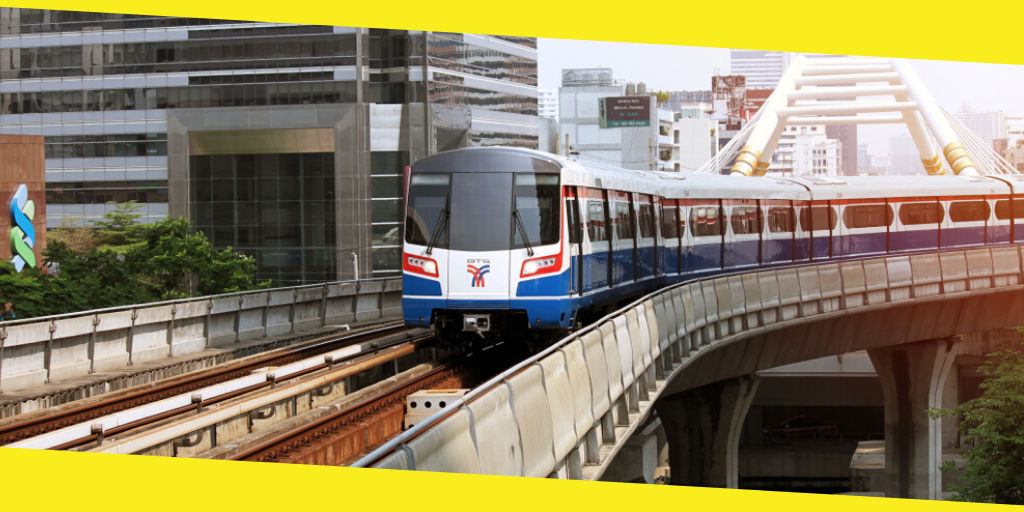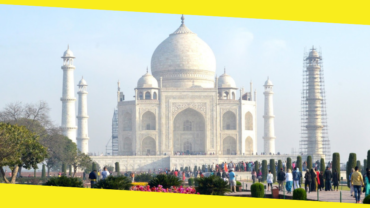Why Choose a Bangkok Hotel Near the BTS?

Visiting the Big Mango can be a lot of fun, no matter if you’re here as a single, couple, family or tour group. Whether you’re staying in a Bangkok hotel near the BTS or something more off the beaten track, you’re going to want to get your head around the different transportation options available to you to navigate this large metropolis.
Of course, we highly recommend you explore different neighborhoods on foot, but getting between one area and another is no easy feat in a city covering 1,569 km². To make your life easier, you’re going to want to sample some local forms of transport.
We shall talk about the three main ways – BTS, MRT, boats/ferries – to get around the city, especially recommended for longer distances. But there is also the bus, tuk-tuk, motorcycle (motosai) and taxi, which you can consider for shorter distances. So, let’s dive in and discover why you should choose a Bangkok hotel near the BTS skytrain, subway or river/canal.
BTS Skytrain
No doubt that first form of transport you’ll come across is the BTS, otherwise known as the Skytrain. As of now, there are two lines in operation, with several new stations and lines being built but not yet in operation.
The Sukhumvit Line begins at Kheha Samutprakan Station and ends at Kasetsart University Station. This line is approximately 39.92 kilometers long and offers 36 service stations.
The Silom Line begins at Bang Wa Station and ends at National Stadium Station. It is approximately 14.2 kilometers and serves 13 stations. Both lines have an interchange station at Siam, in the heart of the city.
Fares start from THB 15 ($US 0.49) to a maximum THB 55 ($US 1.82), depends on the distance travelled. You can opt to buy a single journey ticket, one-day pass or rabbit card, which can be re-used and topped up.
The train is efficient, clean, modern and runs from 5:00 am to 12:00 am daily, with trains arriving at each station approximately every 3-8 minutes.
MRT Underground
Like the BTS, the MRT (underground) is clean, modern and efficient. The subway system also consists of two lines: Blue (19 stations) and Purple (16 stations). Tickets are bought in the of tokens from the machines at the stations. The fares range from THB 15-40 ($US 0.40 – 1.32).
Trains run from 6:00 am – 12:00 am daily. During peak hours (6-9 am and 4:30-7:30 pm) the trains run every 5 minutes, and during off-peak times it’s around every 10 minutes.
The subway is interconnected to the BTS Skytrain at Chatuchak Park station, Silom (Sala Daeng BTS) and Sukhumvit (Asok BTS). Alas, if you need to change network, you need to buy a new ticket as the two systems are not interchangeable.
If you’re planning on taking a regular train to parts beyond Bangkok (i.e., Chiang Mai, Ayutthaya, Hua Hin, Kanchanaburi, Hua Hin, etc.), the MRT is excellent as it stops right below Hua Lamphong Train Station.
Boats & Ferries
Boats and ferries are a convenient and unique way to get around Bangkok. Although this form of travel can be intimidating and confusing at first, once you figure out the routes and the rules, they’re easy and fun! Bangkok has two boat systems: the river ferry system and the canal ferry system.
On the Chao Phraya River, these larger ferry boats run from approximately 5:00 am to about 7:00 pm on weekdays. They can come as speedily as every 10 minutes or as slow as every half hour.
Canal boats, known locally as “Khlong” boats, run on Bangkok’s major canals; with the San Saeb route – running parallel to Petchaburi Road – being the most popular. Canal boats make stops very quickly, so there’s not a lot of time to get on and off. Move swiftly and follow the lead of the people around you. These boats run from dawn to 20:00 (weekdays) / 19:00 (weekends).
Most trips on either the riverboats cost less than THB 20 ($USD 0.66) and around THB 10 ($USD 0.33) on the canal boat. On both vessels, a fare collector will come around to you to sell you a ticket, so squeeze aboard and wait for them to find you.
Recommended For You
10 Things You Must Know Before Traveling to India
Most Inside
Most Inside offers high-quality recommendations and valuable updates to enhance all aspects of your life, providing premium guidance and enriching experiences.




